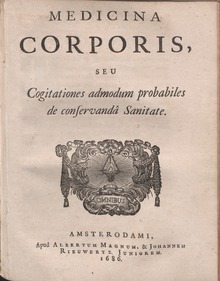Ehrenfried von Tschirnhaus
Ehrenfried Walther von Tschirnhaus (or Tschirnhausen) (10 April 1651 – 11 October 1708) was a German mathematician,[1] physicist, doctor, and philosopher.



Works
changeLate in the seventeenth century, he was charged with making a survey of the minerals of Saxony. He had a government position there. He and his assistant, Johann Friedrich Böttger, discovered how to make porcelain. [2] Before that, it had only been made in Asia.
Tschirnhaus's work in mathematics is remembered in the Tschirnhaus transformation. It removed some intermediate terms from a given algebraic equation. He is also remembered in the Tschirnhausen cubic.
His work in physics included work in optics. Working with Martin Knorr, he developed an improved polishing technique. This was used in the lenses and mirrors he made. He made burning glasses of high quality. He used these in experiments.[3]
References
change- ↑ E. W. von Tschirnhaus: His role in early calculus and his work and impact on Algebra
- ↑ Schönfeld, Martin (October, 1998) "Was There a Western Inventor of Porcelain?" Technology and Culture 39(4): 716-727. Stable URL: https://www.jstor.org/stable/1215846. Accessed: 2015-01-12
- ↑ Winderlich,Rudolf (1949) Winderlich"Brenngläser als Hilfsmittel chemischen Forschens," Chymia, 2: 37-43. Stable URL: https://www.jstor.org/stable/27757131. Accessed: 2015-01-12